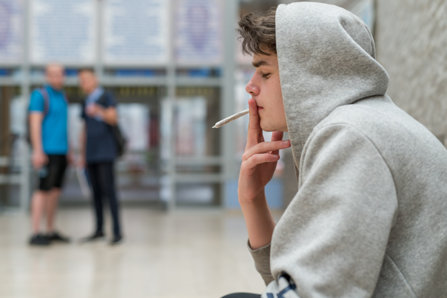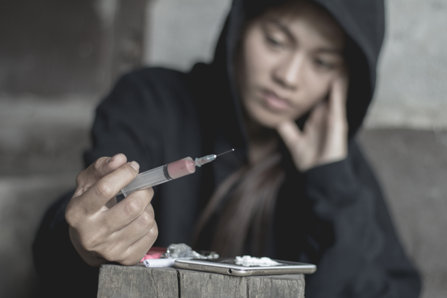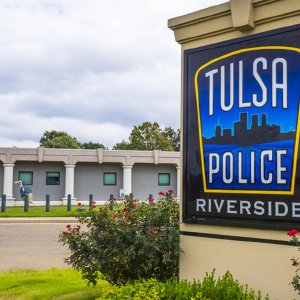Ten Times as Many Teens Use Marijuana Today Than in the 1990s

There have been shifts in our country in the last two decades that can be traced back to the increasing legalization of marijuana for both medicinal and recreational use. One such change is that more young people are using the drug.
The debate regarding marijuana rages on, but one thing just about everyone agrees on is that marijuana should not be made available to adolescents. But if a direct result of increasing marijuana legalization is that more young people are using the drug, wouldn’t that indicate to us that marijuana legalization is a route that we don’t want to take?
New Research Reveals Startling Data on a Massive Increase in Marijuana Use among Youth
A research paper from May 2018 by Nebraska’s College of Public Health in Omaha resurfaced recently. The study was published in the American Academy of Pediatrics. U.S. News also did a piece on it in June of this year.
Here are the preliminary study findings from the Nebraska researchers:
- The study compiled health data on 200,000 high school students, with the dates of the health data ranging from 1999 to 2017. Across the boards, admissions of marijuana use among high school students increased markedly from 1999 to 2017. In 1999, about 0.6% of students admitted to using marijuana at least once in the past month. In 2017, that number increased by more than 10 times with 6.3% of teens revealing they’d used marijuana in the last month.
- The research also found that teens are increasingly using both marijuana and alcohol, in tandem. As one can imagine, the degree of risk present in any kind of substance use is going to increase dramatically when a second substance is added into the mix. According to the study authors, the number of teens who admitted to using alcohol in addition to marijuana was 3.6% in 1991, 7.6% in 2017.
A Drop in Perceived Risk Leads to a Surge in Marijuana Use among Teens
According to Hongying Dai, one of the study authors, “Public opinion on marijuana use has changed dramatically, and restrictions on marijuana use have been relaxing. Currently, 33 states and the District of Columbia have laws in place that allow marijuana to be used medically, recreationally, or both.”
Dai is spot on with her comment on perceived risk. As marijuana legalization has surged forward, teens are seeing less risk in a substance that is now 100% “okay” for adults to use. Teens are beginning to have a similar viewpoint of marijuana as they are of alcohol. Somewhat taboo, maybe, but not exactly “dangerous” or “harmful” per se.
“Teenagers’ attitudes are moving toward greater acceptance of marijuana. For instance, the percentage of high school seniors who perceived the occasional use of marijuana as harmful dropped from 27.4% in 2009 to 17.1% in 2016.”
According to a direct quote from the research paper, “Teenagers’ attitudes are moving toward greater acceptance of marijuana. For instance, the percentage of high school seniors who perceived the occasional use of marijuana as harmful dropped from 27.4% in 2009 to 17.1% in 2016.”
What This Means for the Future

Few things bode as poorly for the future of society as the young people of that society increasing their exposure to drugs. While marijuana might not create the same risks for overdose as opiates, or while marijuana might not have some of the more addictive and harsh elements as hard street drugs such as cocaine or meth, marijuana is still a drug. It has the potential to be misused, and that misuse may turn into addiction.
We’ve already seen how harmful teen drinking is. We know what is at stake when youngsters experiment with alcohol. Why would we be okay with our youth experimenting with another substance en masse?
What Can We Do?
Though each year brings another U.S. state which legalizes marijuana for either medicinal or recreational purposes, this battle is far from over. The states which have legalized marijuana for recreational use are still an extreme majority. We don’t have to accept a future where marijuana is legal and allowed, especially now that we are seeing a soaring increase in marijuana use among teens as a direct result of legalization.
But in all honesty, fighting the marijuana battle for our children is not going to be won or lost in state and federal legislatures and voting booths. It’s going to be won or lost in our own homes.
Prevention is the keynote of parents’ efforts to protect their children from the spreading influence of marijuana. The first effort any parent should take is toward prevention. This mostly involves education. Educating one’s kids includes giving them data about the dangers of marijuana use, having open and honest conversations with them about the subject, and talking about what their kids have already heard regarding marijuana. But a big part of prevention also includes taking steps to ensure that one’s kids aren’t exposed to the drug at all. That includes making sure one’s kids are spending time with the right crowd, getting the kids involved in positive and drug-free activities, making sure the home is in a drug-free neighborhood, etc.
If you are a parent and you see the writing on the wall, the best thing you can do is work hard to get your kids educated on why they wouldn’t want to experiment with marijuana. Don’t wait until they find out for themselves via experimentation. Most parents don’t talk about marijuana with their kids, and that’s a huge mistake.
Teens will find out about marijuana, one way or the other. But it's up to you how they find out about it. They could find out about it via back-alley deals and marijuana-influenced parties with “friends.” Or they could find out about marijuana via several open and honest, casual discussions about the drug with you. It’s your choice, really. Commit to getting your kids educated about this drug so they know why they wouldn’t want to experiment with the substance in the first place.
Sources:
- https://www.usnews.com/news/health-news/articles/2019-06-20/marijuana-use-by-us-teens-has-jumped-10-fold-since-1990s
- https://pediatrics.aappublications.org/content/141/5/e20173787
Reviewed by Claire Pinelli ICAADC, CCS, LADC, RAS, MCAP


